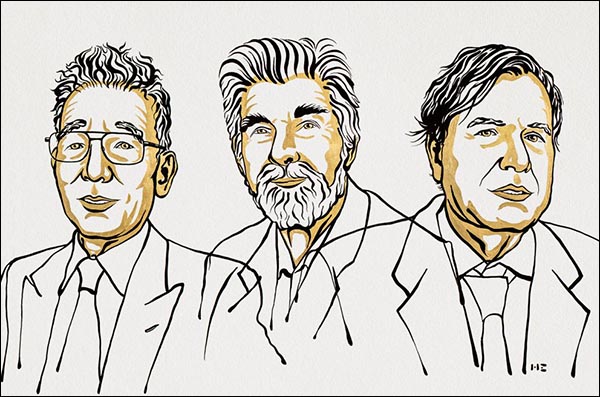Nobel Prize Recognizes Physics of Complex Systems
International trio of scientists earn physics prize for “groundbreaking” work on climate models, revealing patterns in complex systems
COLLEGE PARK, MD, October 5, 2021 — The Royal Swedish Academy of Sciences has awarded the 2021 Nobel Prize in Physics to Syukuro Manabe and Klaus Hasselmann “for the physical modelling of Earth’s climate, quantifying variability and reliably predicting global warming” and to Giorgio Parisi “for the discovery of the interplay of disorder and fluctuations in physical systems from atomic to planetary scales.”
“This prize in physics reflects the deep connections of our field to delving into mysteries that shroud the laws that determine the environment of our home, planet Earth,” said American Physical Society (APS) President S. James Gates, Jr. “The citation of the award clearly shows our discipline’s efforts to establish deep scientific knowledge behind such challenges as global climate change, pollution, and similar processes in complex systems.”
“APS congratulates the 2021 Nobel Laureates for their outstanding contributions to our understanding of complex systems,” said APS CEO Jonathan Bagger. “This year’s prize demonstrates the fundamental role of physics in addressing some of the most pressing problems of our time.”

Ill. Niklas Elmehed ©️ Nobel Prize Outreach
2021 Physics Nobel Laureates. Pictured from left to right: Syukuro Manabe, Klaus Hasselmann, and Giorgio Parisi.
One half of the prize is shared by two climate scientists: Japanese American Syukuro Manabe from Princeton University and German Klaus Hasselmann from the Max Planck Institute of Meteorology. Together, their work has laid the foundation for our understanding of how human activities—specifically, emissions of carbon dioxide—have contributed to global warming.
During the announcement in Stockholm, members of the Nobel Committee for Physics emphasized that sound physical principles underlie the science of climate change.
APS’s 2015 Statement on Earth’s Changing Climate “urges sustained research in climate science” and calls for action to reduce greenhouse gas emissions. APS statements are reviewed and revised every five years.
The other half of the prize goes to Giorgio Parisi, an Italian theoretical physicist at the Sapienza University of Rome, whose research on spin glasses earned him the Dannie Heineman Prize for Mathematical Physics in 2005 and the Lars Onsager Prize in 2016. Parisi has published more than 75 papers in APS journals, including five in APS’s flagship journal, Physical Review Letters, cited by the Nobel Committee.
"This is the eleventh consecutive year papers published in Physical Review Letters by one or more recipients have been cited in the Scientific Background on the Nobel Prizes in Physics or Chemistry,” said APS Director of Publishing Jeff Lewandowski. "The Physical Review journals are among the most-trusted in physics, and their consistent citations by the Nobel Committee demonstrate the important role they play in advancing scientific discovery and research dissemination."
Two articles published in Reviews of Modern Physics cited by the Nobel Committee provide background on spin glasses and the physics of climate variability.
The Nobel Prize, first awarded in 1901, is widely regarded as the highest honor in science, economics, and literature. Each of the 2021 Nobel Prizes comes with an award of 10 million Swedish kronor (about 1.15 million US dollars), split among the recipients.
Additional Reading
The following articles, cited in the Scientific Background on the Nobel Prize in Physics 2021, have been made free-to-read by APS:
G. Parisi, Infinite Number of Order Parameters for Spin-Glasses, Phys. Rev. Lett. 43, 1754 (1979).
Giorgio Parisi, Order Parameter for Spin-Glasses, Phys. Rev. Lett. 50, 1946 (1983).
APS Press Releases
APS issues press releases on research news, Society activities, and other physics tips.
APS Media Contacts
General Media Inquiries
media@aps.org
Using the APS Logo
About APS
The American Physical Society is a nonprofit membership organization working to advance and diffuse the knowledge of physics through its outstanding research journals, scientific meetings, and education, outreach, advocacy, and international activities. APS represents more than 50,000 members, including physicists in academia, national laboratories, and industry in the United States and throughout the world.
